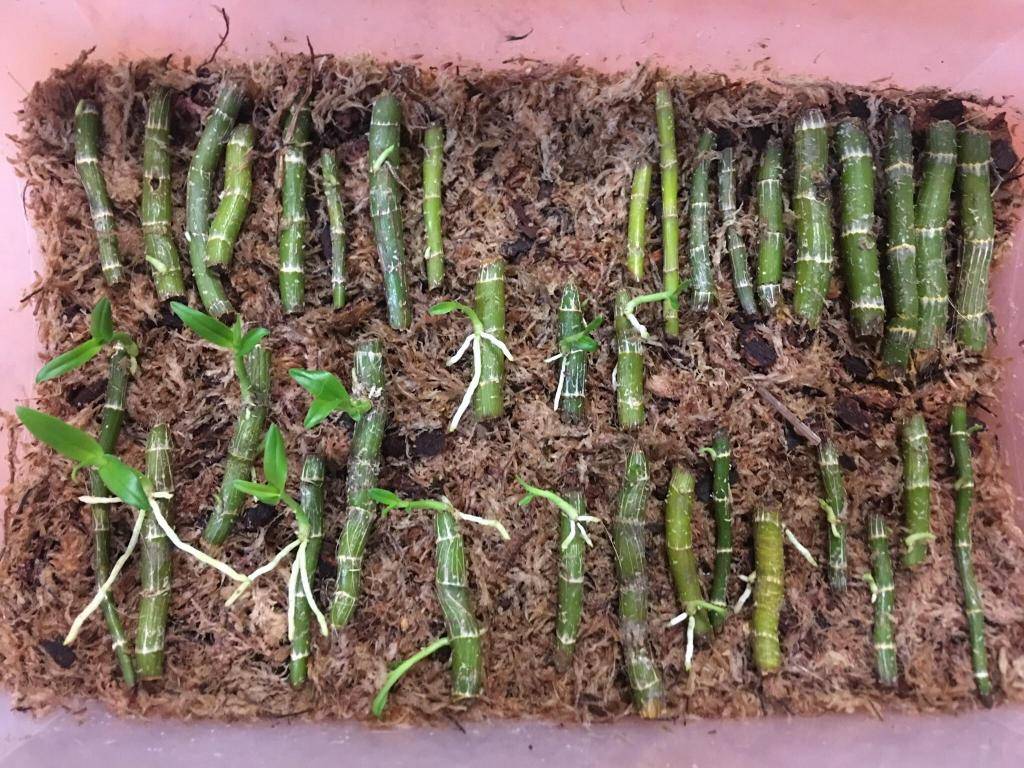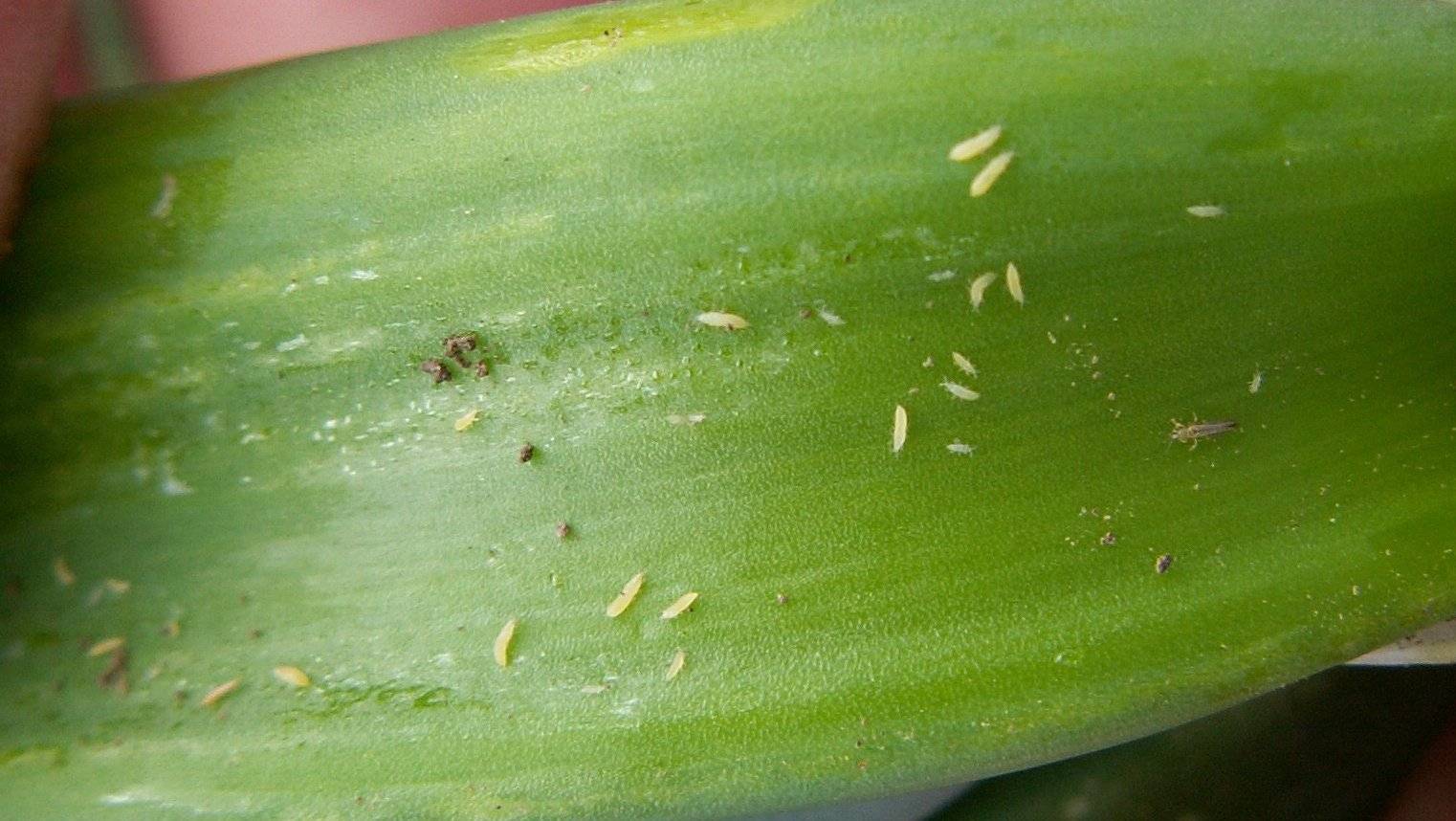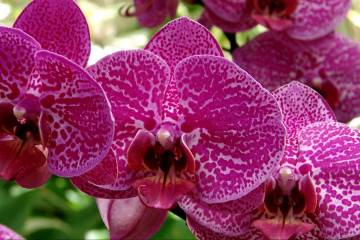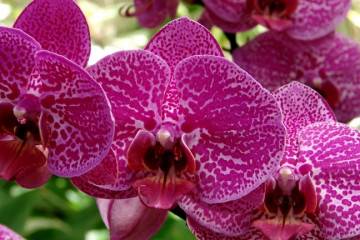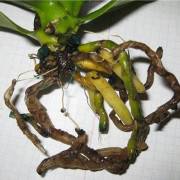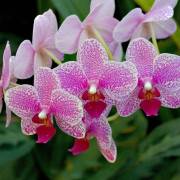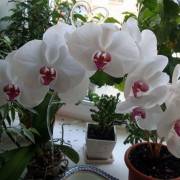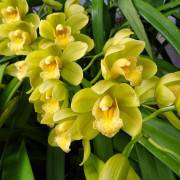Orchid - home care
Content:
Orchid is one of the most popular indoor plants. But the flower is very capricious in its care, so you need to study all the nuances of how to care for an orchid at home.
What does an orchid look like?
Orchids belong to the Orchid family. The family includes many species and varieties. Most of them belong to epiphytes, that is, the flower is attached by the root system to another plant. Epiphytes are aerial roots covered with a thick layer of dead cells. They absorb moisture like litmus paper. There are also varieties that have a common root system.
Common varieties
Many varieties of this flower can be grown at home.
Types of orchids for growing at home:
- Phalaenopsis is the most unpretentious in cultivation and care. It is best to start planting orchids with it. Fleshy foliage of dark green hue. Orchid flowers are mostly white or purple in color;
- aghanizia. Elliptical leaves are located on a small stalk. In one inflorescence, several star-shaped flowers usually bloom. Flowers are odorless;
- oncidium has a long flowering. Inflorescences are spike-shaped. The flowers are small, the petals are yellow or orange. There is a coral color of the petals;
- Cattleya is distinguished by flowers of an unusual shape. The shades of the petals can be different, ranging from dark purple to white;
- miltonia pleases with large dark green leaves with a gray or yellowish tint. The flowers are fragrant, they look like pansies. The flowering period is long;
- dendrobium reaches a height of 90 cm. The stem consists of pseudobulbs. The leaves are arranged alternately. The flowers are fragrant. The shades of the petals are white, purple, orange, and two- and three-color.
Features of home care
It is believed that the plant is very capricious and fastidious in care. But this is only partly true. The main thing is to know how to care for an orchid correctly, and then growing a flower will not be a hassle.
Temperature
All types of orchids are divided into three groups:
- thermophilic (prefer temperatures from 15 ° C to 32 ° C);
- medium temperature (18-22 ° C);
- cold-loving (18 ° С).
Lighting
In order for an orchid in a pot to grow well and bloom profusely, you need to choose the optimal lighting. In summer, this is usually not a problem. If you put the pots in the sun, the houseplant will have enough sunlight.
Additional lighting will be required in autumn and winter. Fluorescent lamps are suitable as it. They should be placed 30 cm from the plant. Turn on for 12 hours.
Watering
In order for an orchid to grow healthy, home care implies the correct organization of watering. Do not water the plant with hard water. Because of this, salt deposits remain. This can be determined by the white bloom.
Spraying
Orchid care involves regularly spraying the plant. Do not spray the flower if it is in the sun. If it begins to bloom, it should be sprayed so that water does not fall on the peduncles. The procedure can be carried out several times a day.
Humidity
The flower loves high humidity. This is especially true during the heating season, when the air in the apartment is very dry. You can spray the plant regularly. You can also hang wet towels from the radiators to increase the humidity in the room.
Priming
The flower will grow well only if you choose the right soil for planting. It is best to purchase a ready-made orchid potting mix that is sold at any gardening store.
The choice of soil depends on the type of root system. Land use is not required for epiphyte varieties.
To prepare the soil mixture yourself you will need:
- chopped bark of coniferous trees;
- charcoal;
- sphagnum moss;
- expanded clay.
Instead of expanded clay, you can use fine gravel or river sand. For the underground root system, dry leaves and earth are also added to the soil mixture.
Top dressing
Growing a plant is not complete without top dressing. It is impossible to grow a healthy and abundantly blooming orchid without this.
For the full development of the plant, the following substances are needed:
- phosphorus;
- potassium;
- nitrogen;
- trace elements (zinc, cobalt, iron, magnesium, calcium, boron).
The best fertilizers:
| Kemira suite | Dissolve 1/3 of the fertilizer sachet in 1 liter of water. Before watering, the prepared solution is diluted in 2 liters of water. |
| "Flower heaven" | This fertilizer contains all the necessary elements for the growth and flowering of plants. It is quickly absorbed by the root system. |
| Fasco | This is both fertilizer and soil at the same time, which has a positive effect on growth and flowering. |
| Joy | Promotes faster growth and abundant flowering. The preparation does not contain chlorine, which has a negative effect on orchids. |
| Biomaster | This fertilizer contains mineral and organic substances. Regular use of the drug increases the immunity of the flower. |
To grow a healthy flower, you need to correctly calculate the amount and frequency of fertilizers applied.
When and how it blooms
The appearance of the inflorescences depends on the variety. The flowering of the orchid is long lasting, lasts from 3 to 8 months. At home, it can bloom twice a year. The flower releases inflorescences in early autumn, but many factors affect the appearance period.
Pruning
The orchid flower needs regular pruning. When done properly, the plant will look better. After the orchid has faded, a long arrow remains. But you shouldn't cut it off right away. It is better to wait until it is completely dry.
A long, regularly flowering arrow is not cut off, because it contains dormant buds from which new inflorescences are formed. Peduncles are usually cut 0.5 cm higher than the dormant bud. You need to cut the arrow with a sharp pruner so that an even cut remains.
How the orchid reproduces
There are several ways to reproduce a flower:
- vegetative;
- cuttings;
- children.
There is also a seed reproduction method, but it is very long and laborious. Practically not used at home.
The easiest way is vegetative. Suitable if the plant is overgrown and does not fit in one pot. The plant should be removed from the pot. Then cut the root system into several pieces. Each of them should have 3 false bulbs. Sprinkle the slices with charcoal and dry the roots. At this time, prepare soil pots to plant each part in a separate flowerpot.
Cuttings are cut after long side shoots begin to appear. The length of the cuttings should be 10-15 cm. The slices are sprinkled with charcoal. You should leave the cuttings for 1-2 hours to dry, and then put them in a horizontal position in the ground, cover with glass or cling film. Every other day, the cuttings are watered with warm water. When the roots reach a length of 5 cm, the cuttings can be transplanted into pots.
Peduncles usually release buds, from which children then grow. This method is similar to propagation of strawberries with a mustache. The grown shoot is carefully cut off with a sharp knife, and then transplanted into a new pot.
Transfer
The plant does not need frequent transplants. The best time for this is spring, when the flower is just starting to grow actively. The orchid transfers a transplant during this period easily and quickly gets used to a new place. The procedure is performed once every 2-3 years. This is enough to update the root system.
Flower transplant stages:
- Prepare a solution for soaking the roots. This will require phytosporin. 1/5 teaspoon is diluted in a little water. The resulting mixture is diluted in 2 liters of water. To increase immunity, you can add a few drops of epin.
- Carefully remove the plant from the pot. If the roots are overgrown, the pot will have to be cut.
- Shake off old substrate. If this is difficult to do, soak the roots in warm water.
- Mix a small amount of old soil with new soil. If there were insects in the old soil, it is treated with insecticides.
- Examine the roots. Trim off dry, soft and blackened parts. Only healthy roots should remain. Old leaves are also cut off.
- Place the roots in a phytosporin solution for 40-50 minutes.
- Then the root system needs to be dried. Sprinkle the cut points with crushed activated carbon.
- Fill the drainage at the bottom of the new pot, then part of the soil.
- Place the flower in a pot and lightly sprinkle it with the substrate. The bark is used as it, which is neatly laid out between the roots.
Diseases and pests
Diseases and pests appear due to improperly organized care, which leads to a decrease in immunity.
Common diseases:
- black rot develops due to dampness. The danger is that the disease is contagious. The affected areas of the flower are cut off, the cut sites are treated with coal. If the root is affected, it is cut to a healthy part;
- gray rot is not as dangerous as black. In this case, the resuscitation of the flower is necessary. All diseased parts are cut off, the flower is removed to a well-ventilated room with low humidity;
- with fusarium, affected tissues are also cut off. The sections are treated with charcoal. The flower must be removed from the pot and the roots must be rinsed, and planted in new soil by treating healthy tissues with fungicides.
Of insects, aphids, spider mites, thrips, and worms are often found. The most effective way to deal with them is chemicals. For example, you can spray the foliage with phytoverm, tanrek, confidor.
Orchid is a very beautiful house plant that will become a decoration and highlight of any interior. But in order for the flower to reciprocate and bloom profusely, it must be regularly looked after in order to protect it from diseases and pests.




